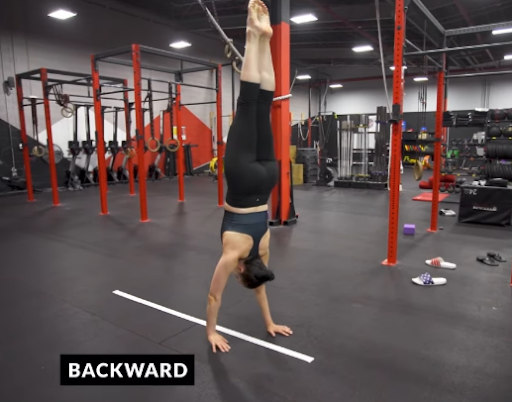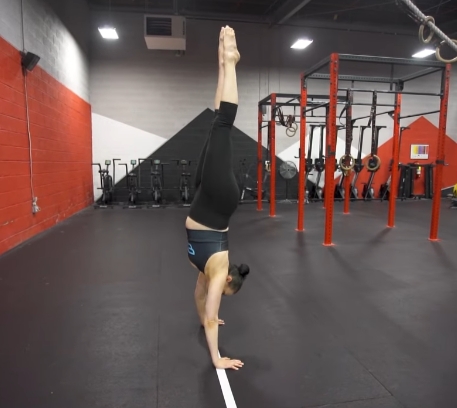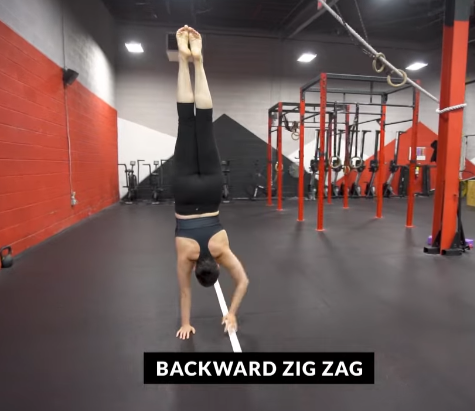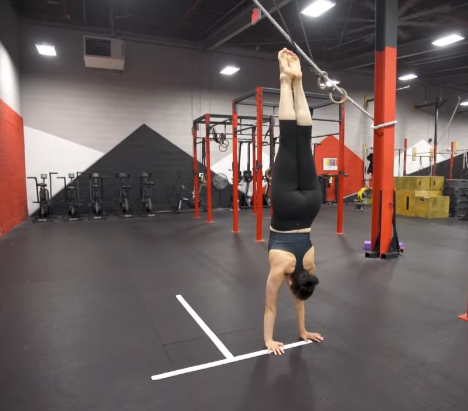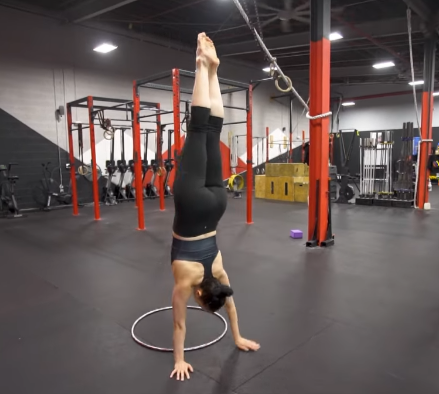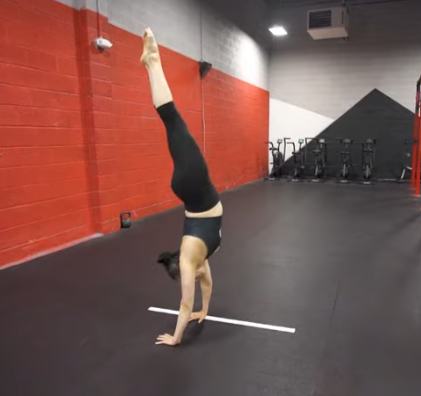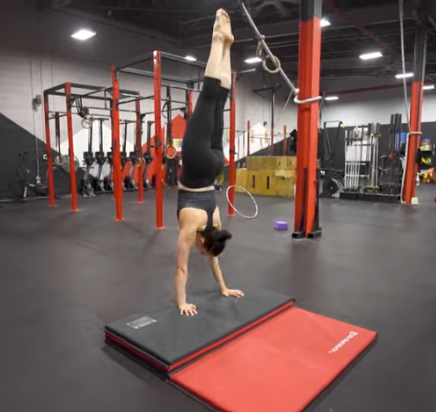So, you’ve nailed the freestanding handstand, and now you’re ready to take it to the next level: walking on your hands. But here’s where the challenge really begins!
Handstand walking is all about dynamic control, balance, and engaging those muscles in new ways. From backward walking to walking in a circle, there are plenty of handstand walk variations to test your skills.
This article will walk you through seven handstand walk variations that build on your freestanding handstand and help you progress step-by-step.
If you’re still learning the basics, check out our earlier articles on 📍 how to master a solid freestanding handstand. Once you’ve mastered that, it’s time to explore how to make walking on your hands feel second nature.
🔥 What Is a Handstand Walk
A 📍handstand walk is an advanced calisthenics move in which you balance on your hands while walking forward, backward, or even in different patterns. Unlike a static handstand, this variation requires dynamic control, engaging your entire body—mainly your shoulders, core, and wrists—to stay balanced as you move.
Learning to do a handstand walk is a thrilling way to challenge your coordination and strength, making it a staple in many advanced workout routines.
💯 Mastering the Freestanding Handstand
Before diving into the different handstand walk drills, you must be comfortable holding a freestanding handstand. This is the foundation for any handstand walk variations. Achieving control and stability in a static handstand is critical because it sets you up for success when you start moving.
A strong core, engaged shoulders, and tight balance are essential for transitioning from a static hold to a handstand walk. If you’re still working on perfecting this, don’t worry. Practice is all part of the process.
Check out these YouTube videos on achieving a perfect handstand, starting with the basics:
🌟 7 Handstand Walk Variations You Must Try
Walking on your hands not only challenges your balance and coordination but also engages your entire body in new and exciting ways. Ready to push your limits and have some fun?
Let’s explore these seven handstand walk variations that will elevate your skills and keep you progressing!
Variation #1. Backward Walking Handstand
First up, backward handstand walking. This variation feels like a total brain teaser because you’re moving in reverse while balancing upside down! When walking backward, the challenge is controlling your core and shoulder stability, ensuring you don’t over-rotate.
☝️ How to: Backward Walking Handstand
- Begin by moving slowly, taking small steps backward.
- Focus on engaging your core and maintaining stability in your shoulders.
- Move deliberately with each step, keeping your balance in check to avoid over-rotating.
Gradually increase the distance as you become more comfortable. Backward walking will help build strength and control, benefiting your overall handstand walking skills.
Variation #2. Lateral Handstand Walking
Next, let’s shift to lateral handstand walking, a fantastic way to build shoulder mobility and improve control over side-to-side movements. Unlike moving forward or backward, lateral walks involve shifting weight between your hands while keeping your body aligned.
☝️ How to: Lateral Handstand Walking
- Position your hands slightly wider than shoulder width to prepare for side-to-side movement.
- Shift your weight from one hand to the other, keeping your body aligned and balanced.
- Take small, controlled steps to the side, moving laterally.
- Focus on engaging your shoulders and core to maintain control as you shift.
This variation helps improve shoulder mobility and builds coordination for side-to-side movements.
Variation #3. Zigzag Handstand Walk
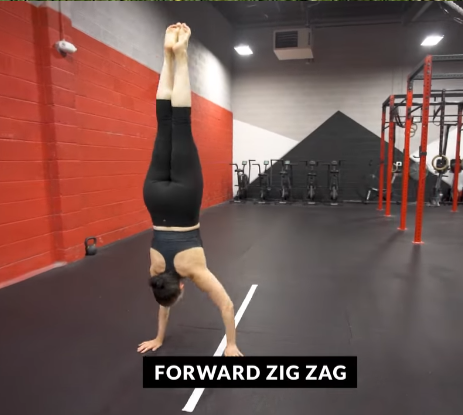
Let’s mix it up with the zigzag handstand walk. Instead of moving in a straight line, this progression forces you to adjust your direction, requiring quick hand placements and body adjustments. You can challenge yourself by moving in a forward or backward zigzag, which adds another layer of difficulty and tests your coordination and balance. It’s all about precision and control!
☝️ How to: Zigzag Handstand Walk
- Start walking in a zigzag pattern instead of a straight line to challenge your control.
- Shift your weight smoothly between your hands, adjusting direction as you go.
- Focus on keeping your legs in line with your movements to maintain balance.
- Move with precision and control, ensuring each step is deliberate.
This variation will improve your coordination and balance, pushing your limits in a fun way.
Variation #4. Walking in a T-Shape
The T-shape handstand walk is perfect for those looking to work on sharp directional changes. Picture yourself tracing the shape of a T on the ground with your hands.
☝️ How to: Walking in a T-Shape
- Start by walking straight in a handstand to form the base of the T.
- Pivot sharply at the top of the line to change direction and trace the upper part of the T.
- Maintain control throughout the turn, focusing on smooth transitions.
- Engage your core and shoulders to balance as you make sharp, directional changes.
This variation challenges your ability to control your body during sudden turns, and it’s an excellent way to build confidence in your handstand walk progression. Just like the zigzag walk, mastering this variation will make you more comfortable with dynamic movement during handstand walks.
Variation #5. Walking in a Circle
Walking in a circle adds another layer of difficulty by requiring you to move in a continuous curved path. It might look easy, but maintaining balance while moving in a circle forces you to engage your core and shoulders like never before.
How to: Walking in a Circle
- Start by walking forward, then gradually curve your steps to create a circular path.
- Focus on consistent hand placement to keep your movements smooth and controlled.
- Engage your core and shoulders to maintain balance as you move in a continuous curve.
- Keep your body tight and aligned to avoid tipping over as you walk in a circle.
- Mastering this variation will enhance your control and fluidity, helping with more advanced handstand walk alternatives.
This handstand walk variation works key muscles needed for fluid movement, especially your core and shoulders. Once you’ve mastered walking in a circle, you’ll feel much more in control of any handstand walk alternative.
Variation #6. 1/2 Pirouette Handstand
Want to add some flair to your handstand walk? The 1/2 pirouette handstand does just that. This move involves pivoting your body while walking, creating a graceful half-turn. It’s one of the most exciting handstand walk variations, challenging balance, timing, and fluidity.
☝️ How to: 1/2 Pirouette Handstand
- Start by walking forward in a handstand with controlled steps.
- When ready, pivot your hands to rotate your body in a half-circle.
- Engage your core throughout the turn to maintain balance and control.
- Move smoothly and deliberately, ensuring your body stays aligned as you complete the pirouette.
Mastering the 1/2 pirouette will help improve your timing, balance, and fluidity, adding a graceful flair to your handstand walk skills.
Variation #7. Elevation Handstand Walk
Finally, for a real challenge, try the elevation handstand walk. This variation takes handstand walking to new heights—literally! Walking up or down a small elevation requires even more hand placement and body control precision.
☝️ How to: Elevation Handstand Walk
- Start at the base of a ramp, step, or raised surface in a stable handstand position.
- Engage your core to keep your body tight as you prepare to walk up or down the elevation.
- Adjust your hand placement carefully to account for changes in height as you move.
- Take steady, controlled steps, focusing on smooth transitions to maintain balance as you move up or down.
Moving up and down adds a new dimension to your how-to-handstand walk journey, whether you’re using a ramp, steps, or another raised surface. This challenging variation requires precision and body control, but mastering it will significantly enhance your overall handstand walking skills.
Here’s a YouTube video showcasing seven different handstand walk variations you can try:
🧐 Frequently Asked Questions
🔎 What muscles are worked during a handstand walk?
A handstand walk engages multiple muscles throughout the body. The shoulders and wrists bear the most weight, while the core muscles, especially the abdominals, are essential for maintaining balance and stability. Additionally, the glutes and legs help keep your body aligned as you move, and the forearms play a role in maintaining control and balance as you shift weight from hand to hand(
🔎 How do I progress into a handstand walk?
Start with drills that build balance and coordination to progress into a handstand walk. Begin with wall-supported handstands and shoulder taps to improve weight shifting. Practice walking toward the wall for support once you are comfortable holding a handstand. Gradually, start walking away from the wall into a free space to build confidence and balance. Regular practice and gradually increasing your distance will help you master this skill(
🔎 What are some good handstand walk alternatives?
If you’re not quite ready for a full handstand walk, alternatives like wall walks, handstand holds, or even bear crawls can help build the necessary strength and coordination. These exercises mimic some of the core and shoulder engagement needed for handstand walks while being easier to control(
🔎 How long does it take to learn how to handstand walk?
Learning to handstand walk varies from person to person depending on factors like current strength, balance, and practice frequency. For many, consistent practice 2-3 times a week for several months is enough to make noticeable progress. The key is to start small, focus on control, and practice regularly.
💥 Conclusion
These handstand walk variations are more than just party tricks—they’re key variations that will help you gain total body control, improve your balance, and build strength in the muscles worked during handstand walks. Whether you’re moving backward, sideways, or up an incline, each variation challenges your body in new ways and pushes your skills to the next level.
Still trying to figure out where to start? Practice each variation step-by-step and gradually work your way up as you build confidence.
And if you’re looking for personalized guidance on how to learn handstand walk or for even more handstand walk drills, check out The Movement Athlete app for a customized training plan tailored to your needs. Take the ASSESSMENT now.💪

